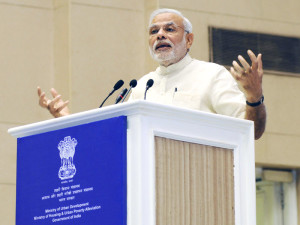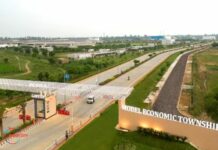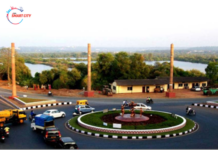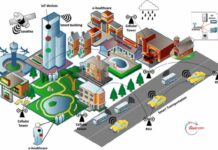

Given the challenges involved in developing 100 smart cities, only the capable cities will be chosen under the Smart Cities Mission through a two-stage competition. This was indicated in the Operation Guidelines for Smart Cities Mission released by Prime Minister Narendra Modi while launching the Mission. The selection criteria to be used in both the stages of competition was elaborated in the Guidelines.
In the Stage-1 of City Challenge Competition, each State and Union Territory will score all their cities based on a set of criteria and nominate the top scorers as per the indicated number of potential smart cities for participation in the Stage-2 of competition.
The evaluation criteria for Stage-1 of competition within the State/UT is as below:
1. Existing Service Levels (25 points): This includes Increase in service levels over Census 2011, An operational Online Grievance Redressal System, Publication of at least first monthly e-newsletter and online publication of municipal budget expenditure details for the last two financial years on website.
2. Institutional Systems and Capacities (15 points): This covers imposition of penalties for delays in service delivery and improvement in internal resource generation over the last three years;
3. Self-financing (30 points): This would be reflected in payment of salaries by urban local bodies up to last month, Auditing of accounts up to FY 2012-13, Contribution of internal revenues to the Budget for 2014-15 and Percentage of establishment and maintenance cost of water supply met through user charges during 2014-15.
4. Past track record (30 points): Percentage of JNNURM projects completed which were sanctioned till 2012, Percentage of City level reforms achieved under JNNURM and extent of capital expenditure met from internal resources.
The 100 potential smart cities nominated by all the States and UTs based on Stage-1 criteria will prepare Smart City Plans which will be rigorously evaluated in the Stage-2 of the competition for prioritizing cities for financing. In the first round of this stage, 20 top scorers will be chosen for financing during this financial year. The remaining would be asked to make up the deficiencies identified by the Apex Committee in the Ministry of Urban Development for participation in the next two rounds of competition. 40 cities each will be selected for financing during the next rounds of competition.
Stage-2 criteria for evaluation of Smart City Plans is as below:
CITY LEVEL EVALUATION (30 points)
1. Credibility of implementation : This encompasses improvement in operational efficiency over the last three years as reflected in average time taken to give building plan approvals, increase in property tax assessment and collection, collection of user charges for water, improvement in power supply, easing of traffic congestion, online accessing of statutory documents through adoption of IT etc.
2. City Vision and Strategy: As reflected in the degree of correlation with the needs and aspirations of the residents, use of ICT to improve public service delivery, impact on core economic activity and inclusiveness.
PROPOSAL LEVEL EVALUATION (70 points)
3. Impact of proposal: To what extent the proposal is inclusive in terms of benefits to the poor and disadvantaged, Extent of employment generation, Articulation of quantifiable outcomes based on citizen consultations, Impact on environment etc.
4. Cost effectiveness of Smart City Plan: Application of smart solutions for doing more with less of resources, Alternatives considered to enhance cost effectiveness of the proposal, firming up of resources required from various sources, Provision for Operation & Maintenance Costs, IT interventions to improve public service delivery.
5. Innovation and Scalability: Extent of adoption of best practices in consultation with citizens, Applicability of project to the entire city, Adoption of smart solutions and Pan-city developments.
6. Processes followed: Extent of citizen consultations, vulnerable sections like the differently abled, children, elderly etc., ward committees and area sabhas and important citizen groups, Extent of use of social media and mobile governance during citizen consultations and Accommodation of contrary voices in the strategy and planning.





















